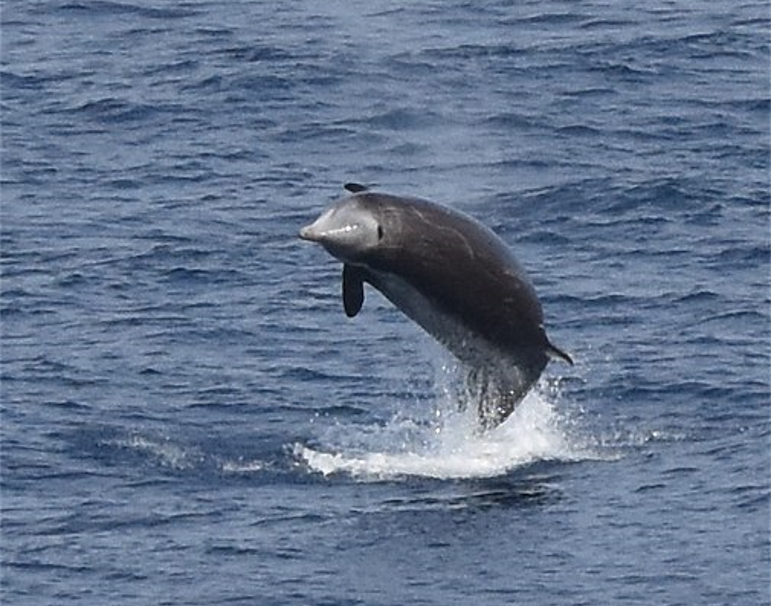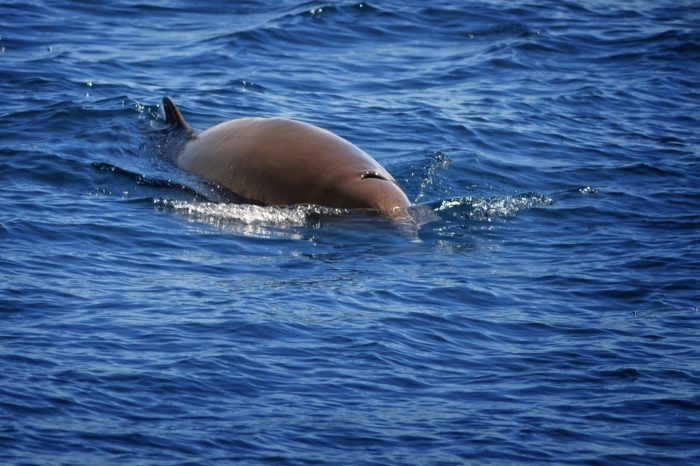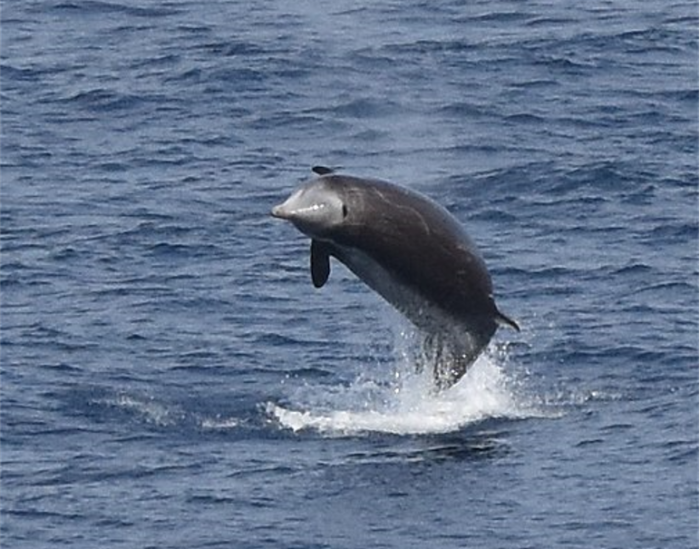
Sea Wonder: Cuvier’s Beaked Whale

Photo credit: Alexandre Roux
Cuvier’s beaked whales (Ziphius cavirostris) are one of the most frequently sighted species of beaked whales in the world. They are among the most common and abundant of all beaked whales, which are quite a rare sight in the open ocean.
The Cuvier’s beaked whale currently holds the record for deepest and longest dive of any species of mammal on earth. The deepest recorded dive was 9,816 feet (nearly 2 miles) and the longest known dive lasted 222 minutes!
DESCRIPTION
Cuvier’s beaked whales have stout, cigar-shaped bodies and sloped heads. Their bodies are slate gray to reddish-brown in color, with the reddish-brown coloration caused by microscopic algae and diatoms that attach themselves to the whales. They have a distinct, short beak and their jaws turn slightly upward. Males have two cone-shaped teeth that protrude from their bottom jaws, which they use for social behavior like fighting. Their pectoral fins are small and narrow with rounded tips, and the whales fold them to fit flat against their bodies when at rest. When fully grown, Cuvier’s beaked whales can reach maximum lengths of 23 feet and weigh up to 6,800 pounds. There is not a significant difference in size between males and females.
DIET & HABITAT
Cuvier’s beaked whales are opportunistic feeders that will eat whatever they can find that is easy to catch. Their diet is mostly comprised of deep-sea squid, octopus, fish, and crustaceans. The teeth these whales do have aren’t useful for hunting, so they’ve developed a unique way of foraging. Grooves between the tissue in their throats allow the whales to create a vacuum that allows them to suction in their prey. The force of this vacuum is nearly impossible for smaller animals to escape.
Cuvier’s beaked whales live in the open ocean and are found in most of the world’s oceans and seas. They also have the longest range of any beaked whale species. They are widely distributed in waters from tropical to subpolar latitudes and are often found along steep slope habitats like submarine canyons and escarpments. These elusive whales have been spotted in and near Greater Farallones National Marine Sanctuary off the coast of Northern California.
LIFE HISTORY
Cuvier’s beaked whales reach sexual maturity when they achieve their full body size, which is usually between the ages of seven and 11. Breeding and calving can occur all year but are most common in the spring months when waters are warmer and food is more available. Females give birth to a single calf every two to three years, and calves are born tail first so their blowholes – used for breathing – are the last thing to enter the water. Scientists believe the maximum lifespan of a Cuvier’s beaked whale is around 60 years old.
THREATS & CONSERVATION
Cuvier’s beaked whales spend most of their lives far offshore, which means they are probably rarely exposed to human activities that occur closer to the coasts, like tourism and recreation, coastal development, and many types of fisheries. One significant threat to this species is human-caused underwater noise associated with energy exploration and defense activities. High levels of noise lead these very auditory animals to become disoriented, which can lead to stranding and death. Accidental entanglement in fishing gear is also a common danger Cuvier’s beaked whales face. Like all marine mammals in U.S. waters, these whales receive protections under the Marine Mammal Protection Act of 1972, and internationally the species is listed on CITES’ Appendix II throughout its entire range.

Photo credit: Charlotte Kirchner
